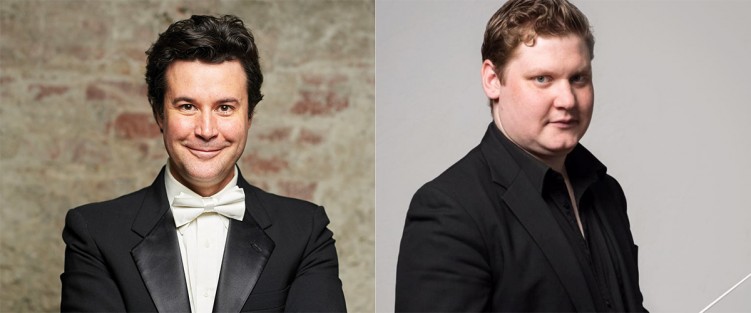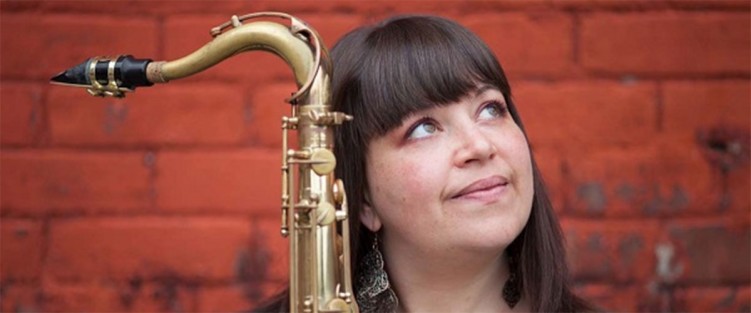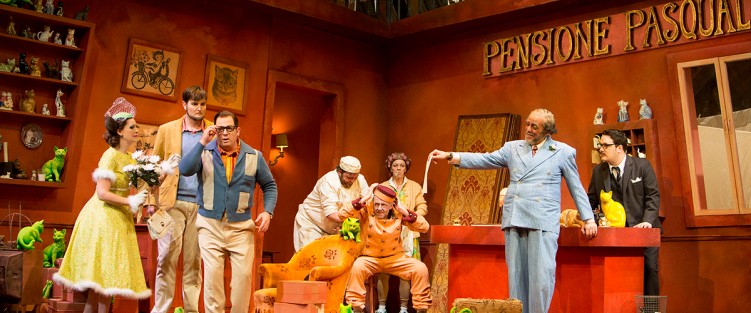 “It’s a story that you could say has an old, overused plot that’s not relevant. It’s about an older man who believes he’s irresistible to women. This is a different take on that story, but he’s not going to take no for an answer. He wants to be able to conquer and have his conquests.”
“It’s a story that you could say has an old, overused plot that’s not relevant. It’s about an older man who believes he’s irresistible to women. This is a different take on that story, but he’s not going to take no for an answer. He wants to be able to conquer and have his conquests.”
Perryn Leech – General Director of the Canadian Opera Company – is speaking here about Don Pasquale, one of the three final shows of the current Canadian Opera Company’s season, in an interview that ranged from his mission to support new operas to the opportunities and implications of sharing a venue with the National Ballet of Canada (NBoC). After a season of staples of the canon, the COC is closing strong with a trio of seldom-staged works, including the world premiere of a COC-commissioned work. “The good thing is that it’s done in a very funny way,” continues Leech on the topic of Pasquale. “The season is quite heavy, so I think having some levity in there will be welcomed by our cast.”
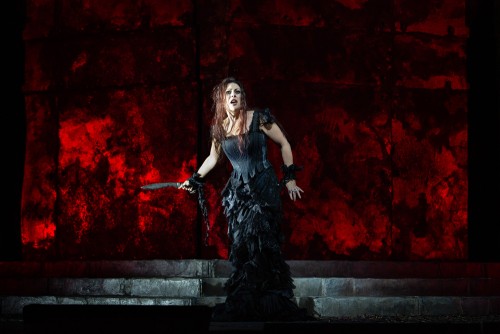 In contrast to that levity is Luigi Cherubini’s Medea, which follows Don Pasquale in May. It’s an opera that lives or dies based on the soprano singing the title role. When asked what he’s looking forward to the most in Sondra Radvanovsky’s take, Leech responds in his characteristically colourful way:
In contrast to that levity is Luigi Cherubini’s Medea, which follows Don Pasquale in May. It’s an opera that lives or dies based on the soprano singing the title role. When asked what he’s looking forward to the most in Sondra Radvanovsky’s take, Leech responds in his characteristically colourful way:
“It’s a bit like asking, ‘What are you most looking forward to in a LeBron James performance?’ This is a world superstar who can sing anything and I will be entranced. She was the one that approached me and said, ‘I really want to sing Medea. Are you interested in doing that?’ The reason it’s rarely done is not the quality of the music, but the fact that it’s so impossible to cast. So when Sondra comes to you with an idea like that, ‘Yes, let’s see how we can make that work.’”
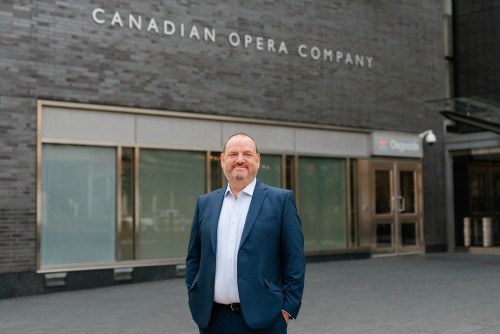 Leech began his role at the COC amidst the roiling waves of the pandemic, tasked with preparing the company to keep the programming momentum going during the lockdowns, and preparing for live performances when the opportunity arose. In the interview, he looks back on his first time visiting the Four Seasons Centre for the Performing Arts to attend a COC production.
Leech began his role at the COC amidst the roiling waves of the pandemic, tasked with preparing the company to keep the programming momentum going during the lockdowns, and preparing for live performances when the opportunity arose. In the interview, he looks back on his first time visiting the Four Seasons Centre for the Performing Arts to attend a COC production.
“I walked up from Union Station and knew it was just past the Hilton Hotel. There’s a slight bend in the road on University from Union Station, and I saw this hive of activity. The foyer was lit up, and there were people inside. It looked like such a welcoming space, which is different from some theatres where you just see the sign of the show. This was clearly a communal meeting place to share art. It was wildly exciting to see it for the first time and know that I was going to be part of a 2,000-person audience that night.”
Leech also spoke in the interview about how the Canadian Opera Company Theatre on Front Street offers creative opportunities that the Four Seasons Centre for the Performing Arts cannot encompass.
“We want to present stories that haven’t been told on the operatic stage in Toronto. Opera is an expensive business, so a smaller and more intimate space is a good starting place for someone new to opera. … You can really see the sweat on people’s faces and see them get into the story in a way that is hard to do in a larger auditorium. You can feel the impact of the human voice pressing on your chest. It’s a deeply engaging and immersive way of seeing opera. What I want to do in that space is much more of that.”
 The season’s final show is a case in point: Aportia Cryptych: a Black Opera for Portia White appears to be an example of the COC walking the walk in response to all the recent talk about more diverse stories in opera.
The season’s final show is a case in point: Aportia Cryptych: a Black Opera for Portia White appears to be an example of the COC walking the walk in response to all the recent talk about more diverse stories in opera.
“Portia White was a Nova Scotian Black singer who sang opera and would have been an absolute world superstar. However, she wasn’t able to perform on stages because of rules that didn’t allow Black singers and performers to be on stage. So the telling of her story is way overdue. Of course, there are more opportunities now, but you also have to consider if there are still those kinds of barriers in place for Black singers today. Barriers are coming down, but are they coming down quickly enough?”
Created by composer Sean Mayes and director/librettist Haui, Aportia Cryptych runs June 14 to 16, with Neema Bickersteth, Adrienne Danrich and SATE, in the roles of Portia Body, Portia Spirit, and Portia Soul respectively.
Michael Zarathus-Cook is Editor-in-Chief of CANNOPY Visual and Performing Arts Newsletter. The interview with Perryn Leech quoted here appears in tandem with a similarly-themed conversation with Hope Muir, Artistic Director of the National Ballet of Canada, in the Hubs & Huddles series presented by CANNOPY. You can access the full story by visiting the website www.performingarts.substack.com and subscribing to Hubs & Huddles.
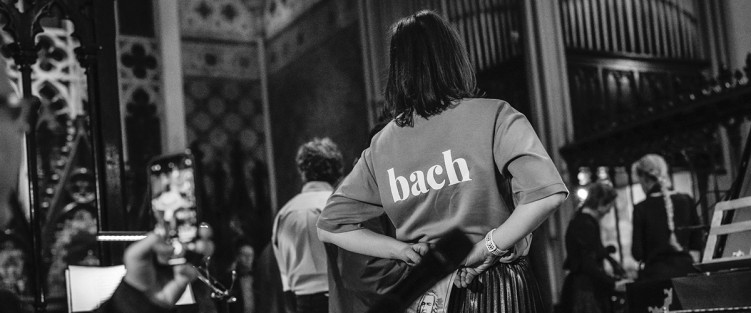 The Toronto Bach Festival was founded in 2016 by internationally-recognized Bach authority John Abberger (best known to Toronto period music devotees as principal oboist of Tafelmusik Baroque Orchestra). In the spring of 2019, columnist Matthew Whitfield interviewed Abberger for The WholeNote and wrote this: “For the past three years, the Toronto Bach Festival has presented a three-day intensive series of concerts, recitals, and lecture presentations focusing on Johann Sebastian Bach, his world, and his works. Increasing in size and scale each year, the festival attracts magnificent performers and interpreters.” Substitute “past five non-pandemic years” for “three” and the comment is as accurate today as it was then.
The Toronto Bach Festival was founded in 2016 by internationally-recognized Bach authority John Abberger (best known to Toronto period music devotees as principal oboist of Tafelmusik Baroque Orchestra). In the spring of 2019, columnist Matthew Whitfield interviewed Abberger for The WholeNote and wrote this: “For the past three years, the Toronto Bach Festival has presented a three-day intensive series of concerts, recitals, and lecture presentations focusing on Johann Sebastian Bach, his world, and his works. Increasing in size and scale each year, the festival attracts magnificent performers and interpreters.” Substitute “past five non-pandemic years” for “three” and the comment is as accurate today as it was then.





